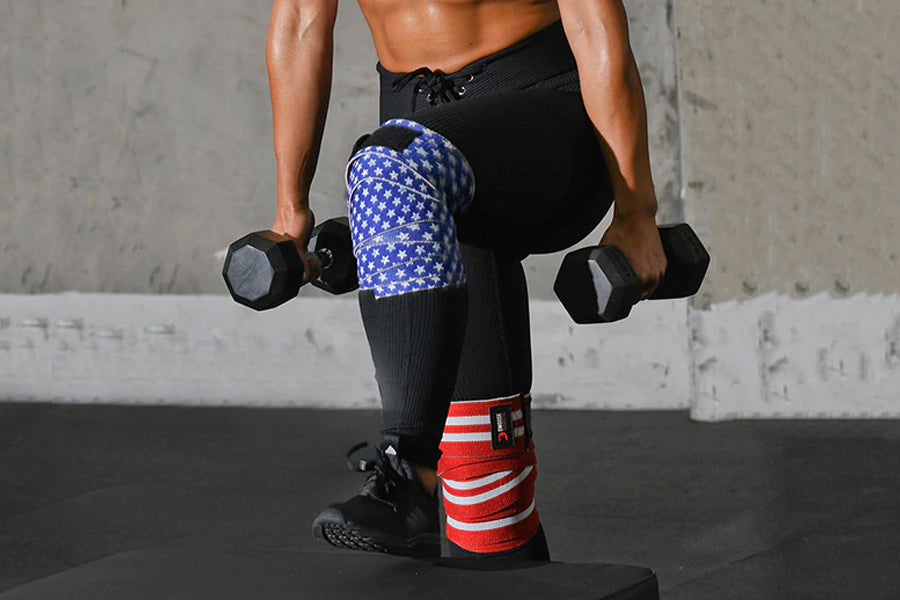Whether you are strength training, powerlifting, or weight lifting, knees are the ones bearing the brunt; they remain neglected. If you want to keep lifting heavier weights and building up your muscular strength without compromising your knees, then wearing knee wraps is the most convenient way to go.
In this article, we will tell you all about knee wraps, how they can help you protect your knees in various workouts and how you can keep lifting heavier weights without having to compromise your joints.
Benefits of Knee Wraps
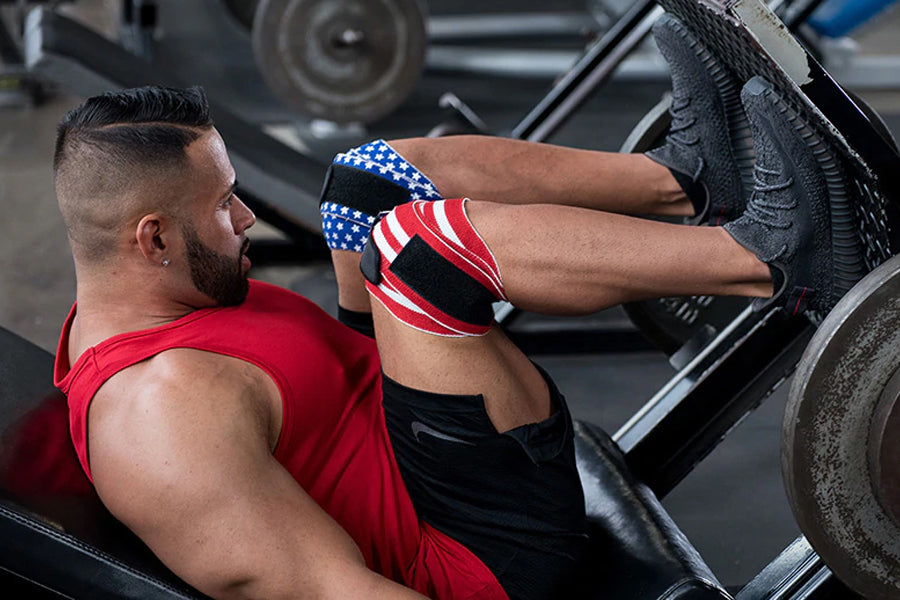
Knee wraps for weight lifting are a long piece of a stretchable neoprene fabric that goes around your knees and helps lift off the pressure and stabilize the knees so you can work out with proper form and technique. Amongst the many benefits offered by knee wraps, here are a few major ones that will surely get you buying a pair of your own.
1. Allows You to Lift Heavier Weights
Do you remember how we just talked about the knee wraps being made with a stretchable material? This is how it helps you to lift.
When lifting heavy weights and performing workouts like weighted squats, the knee wraps' elasticity helps you bounce back up.
When you bend down into the squat position, the elastic energy builds up, which helps you to bounce back up straight. This built-up elasticity push allows you to lift heavier weights without risking injuries.
2. Protects and Stabilizes the Knees
Knee wraps provide firm support to the knees while working out. This support increases the compression on your knee joints, helping them stabilize and reduce pressure, so you can add a boost to your athletic performance without risking injuries.
3. Workout Without the Fear of Injury
Whether you're a professional or have recently started your strength training journey, having an injury will affect your athletic performance and your lifting confidence, especially if it's a knee injury.
Wearing knee wraps reduces pressure on the knee joint and lowers the risks of injuries. They help your knee muscles recover quickly and intensify the workouts by lifting heavy so that you can achieve maximum strength and improvised athletic performance.
4. Comfort Above All
Weight lifting exercises require the lifter's strength from every inch of muscle in their body. If these exercises are not done in a comfortable environment, you will surely want to quickly get rid of such training.
Workouts Using Knee Wraps
Here are a few knee wraps workouts that will help you stabilize the knees and maintain proper technique so you don't end up hurting your knees:
1. Barbell Squat
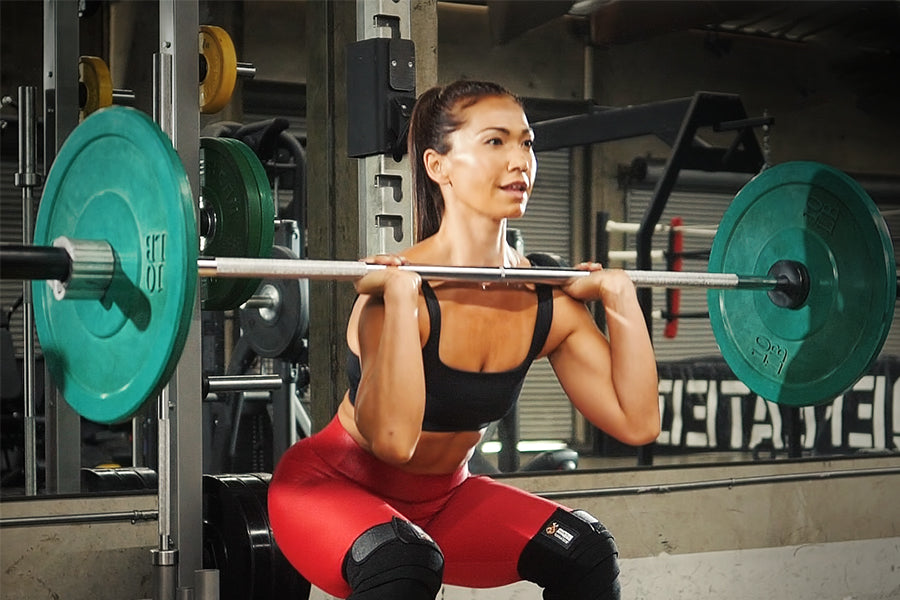
- Start by taking a barbell that you can lift easily on your shoulders.
- Hold the bars a little more than your shoulder width
- Hold the barbell at the back of your neck and rest it on your shoulders.
- Keep your feet facing outwards to 20-30 degrees.
- Open the feet wider than your shoulder width and get ready to squat
- Bend downwards until your knees are perpendicular to your toes.
- Stay in the position for 2-3 seconds and push on your toes to stand back upwards.
Related Article: Different Types of Barbells for your Weightlifting Needs
2. Barbell Rows
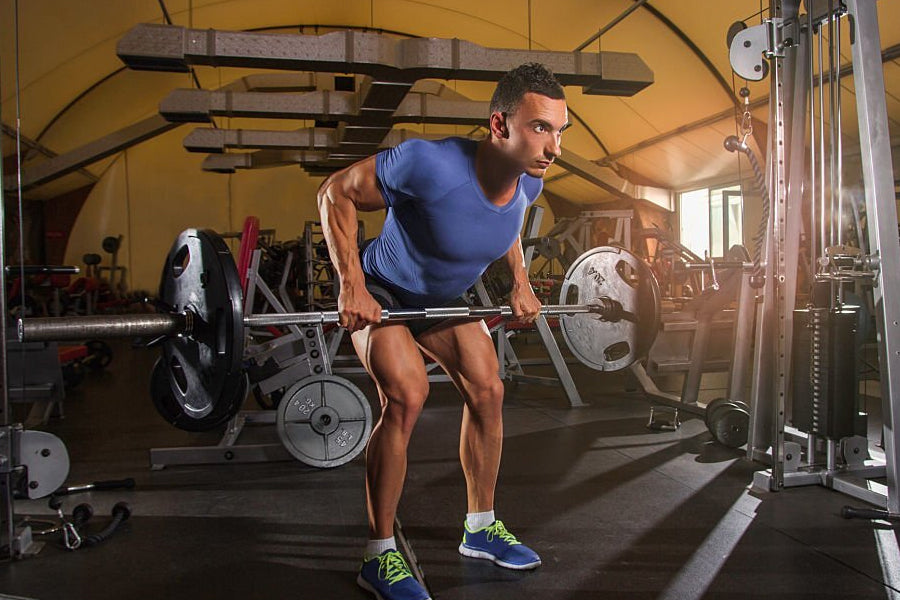
- Place your feet under the barbell and your hands on the bar at shoulder-width apart.
- Slightly bend the knees and lift the barbell
- Keep the back straight and hips up
- Lift the barbell with the help of your knees to your waist
- Slowly return the barbell to your knees and then lift it again
Related Article: Top 10 Essential Barbell Exercises for Building Muscle and Strength
3. Deadlifts

- Start by standing in front of a barbell with your toes crossing the bar from underneath and feet open shoulder-width apart.
- Then, keeping your back straight and core tight, bend down and hold the weights with a firm grip.
- Liftoff the barbell from the ground till your thigh level
- Slowly bring the barbell back to the floor, completing one rep.
Related Article: 6 Yoga & Exercise Poses To Warm Up Your Body Before Deadlifts
4. Lunges
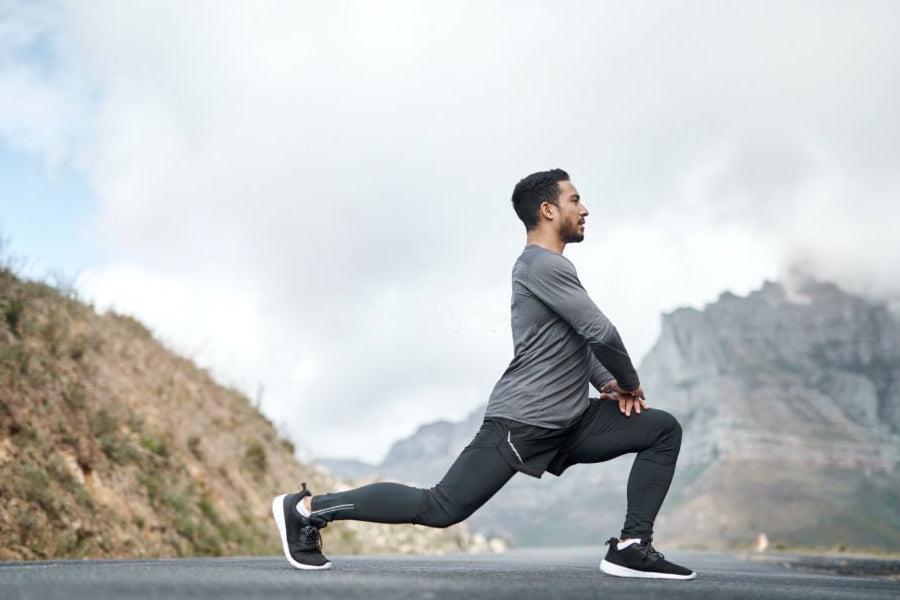
- Start by standing straight with one foot at the front and the other at the back, resting your toe.
- Make sure your core is tight, and your shoulders are low
- Inhale and lunge forward by making a 90-degree angle with your right leg and resting the other leg behind on the floor
- Bring back your right foot and then put your left leg forward, in the same manner, making a 90-degree angle
- Continue the lunges in an alternating manner
Related Article: Benefits of Doing Lunges Every Day
5. Clean and Jerk
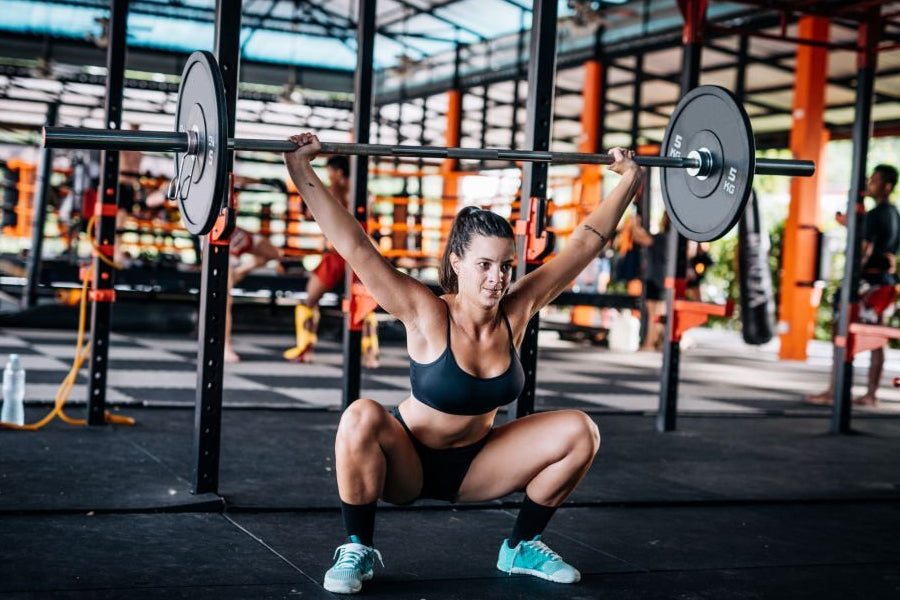
- Position yourself by bending and holding the bar from the top with your knuckles facing outwards.
- Keep your hips bent below the shoulders, chest up and tight, head straight, and spine long and tall.
- Lift the bar till your thigh, pushing it over and jumping to power through; lift the bar on your shoulders, doing a front squat.
- Once the bar is on your shoulders, stand up straight and exhale to re-stabilize yourself, completing half part of your exercise.
- Again, take a deep breath and brace your torso against the belt and jump to power through to lift the bar over your head.
- Hold for two to three seconds and slowly bring it down with a front squat, lowering it down to your thighs, and lastly, putting the bar back on the floor.
- This completes your clean and jerk make sure to keep your torso tight to stabilize your spine.
Buying a Knee Wrap
If you're still reading this article, it means that you're ready to buy your pair of knee wraps. Therefore, we've made a list of factors explaining what you should look out for before buying the knee wraps for the gym;
1. Length
When buying a knee wrap for weightlifting, one of the most important factors is the length of the wrap. This is because the length will allow you to wrap the fabric around your knee just enough times for you to get a firm grip and support.
DMoose knee wraps are 78" long, allowing you to wrap them around the knee just enough times to give you stability and still not grip on so tight that your movements get restricted.
2. Durability
The next important thing is the durability of the knee wraps. Since these wraps will be bearing the weight and helping you relaying pressure off of your knees, they need to be durable so you can rely on them without having them teared up.
The knee wraps by DMoose are made with high-quality neoprene material and reinforced fastening systems, ensuring a snug and comfortable fit, so you don't end up constantly pulling the wraps in place and can enjoy your workouts with full confidence.
The advanced fastener ensures that the grips stay snuggly fit on your knees, relieving the knee pressure and allowing you to rely on them without fearing any rips and tears.
3. User Friendly
When starting off using something new, it needs to be user-friendly. The knee straps by DMoose come with an advanced fastener that makes the strapping on the knee wraps not just easy but very convenient for new users to use and enjoy.
They also offer their customers two variations in knee wrap thickness, 7mm and 5mm, which allows you to select the most comfortable fit for your knees to train your body with utmost comfort.
Conclusion
Knee joints are one of the most ignored joints yet bear the most weight when weight training. It is extremely important to protect your knees by wearing knee wraps to avoid getting injured and continue lifting heavier weights. Knee wraps help you protect the joints and stabilize your body, so you lift weights with proper form and technique and can work out confidently and enjoy maximum gains.
Reading List
Top 7 Benefits of Wearing Compression Arm Sleeves
Best Leg Exercises of All Time
5 Reasons Why Wrist Training is Important for Bodybuilders
Article Sources
- König, M., and K. Biener. ‘[Sport-specific injuries in weight lifting]’. Schweizerische Zeitschrift fur Sportmedizin, vol. 38, no. 1, Apr. 1990, pp. 25–30.
- Mazur, Lynnette J., et al. ‘Weight-Training Injuries’. Sports Medicine, vol. 16, no. 1, July 1993, pp. 57–63. Springer Link, https://doi.org/10.2165/00007256-199316010-00005.








